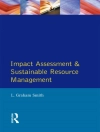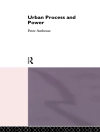This book presents a complete set of studies of alluvial fan sediments in southern Iran from the point of view of sedimentology, sedimentary geochemistry, tectonics, economic geology, groundwater, geomorphology, hazards and telemetry. In addition, the book focuses on advanced topics and theory, which practically serves as a model for the study of this type of sediment around the world.
Alluvial fans are an important and fundamental factor in many sciences such as geology, environmental science, natural hazards, groundwater science, agriculture and many other related sciences. Lack of accurate knowledge of their constituent sediments has always been an important problem for experts in many science disciplines. From the economic point of view, the identification of alluvial fan deposits is of particular importance. For example, alluvial deposits are the centre of groundwater accumulation, and most groundwater reservoirs within the sedimentary basin are fed by water from alluvialdeposits. Most of the gold production in South Africa has been formed as placer deposits in ancient alluvial fans. In addition, a large amount of uranium placer deposits is extracted from old alluvial fans in sedimentary basins in South Africa. This book serves as an ideal guide for experts in earth and environmental sciences and hydrology.
Inhaltsverzeichnis
Introduction.- Geology of the study area.- Advanced sedimentology studies.- Petrographic and geochemical studies.- Tectonic and morphotectonic studies.- Environmental geological studies.- Remote sensing studies.- Basin analysis and modeling.
Über den Autor
Dr. Saeed Pourmorad is a postdoctral fellow at the Institute of Surface-Earth System Science, Tianjin University, China, and he focuses on sedimentary geochemistry and remote sensing. He has published many journal articles and three specialized books on sedimentology and geochemical exploration in Iran. He has been associated with a number of international research and teaching assignments related to sedimentary geochemistry and remote sensing. Dr. Ashutosh Mohanty currently works at the Centre for Environment and Economic Development (CEED), New Delhi, India, and he is a professor at the Faculty of Science and Technology, Madhyanchal Professional University, Bhopal, India. He also works as a director and a professor in disaster management and climate change in Shoolini University, India, and serves at prominent international universities and institutions. He was assigned to the International Centre for Integrated Mountain Development (ICIMOD), Nepal, which is part of the research-based university network called the Himalayan University Consortium (HUC) consisting of 40 universities in 8 Himalayan countries. He completed his Ph.D. in urban environmental governance in Utkal University, Odisha, and his M.S. in urban environmental management at the Asian Institute of Technology, Thailand, under a fellowship from the U.S. Agency for International Development (USAID). He has published 7 journal papers with high impact (SCI and Scopus) and 12 book chapters with Springer Nature and Emerald Publishing, focusing on disaster management and climate change impacts in terms of water resources management, human health and the agriculture interface. He is associated with the BRICS Research Committee and the Asia Pacific Economic Cooperation (APEC) as a delegate for Papua New Guinea to address future impacts of disaster policy and governance, climate change, costal hazards, mountain hazards, food security and transboundary water resource management as well as regional cooperation. He was associated with international research centres including the National Center for Atmospheric Research, USA; the Consortium for Capacity Building at the University of Colorado, USA; the National Dong Hwa University, Taiwan; the Asian Institute of Technology, Thailand; and University College of London, UK.












